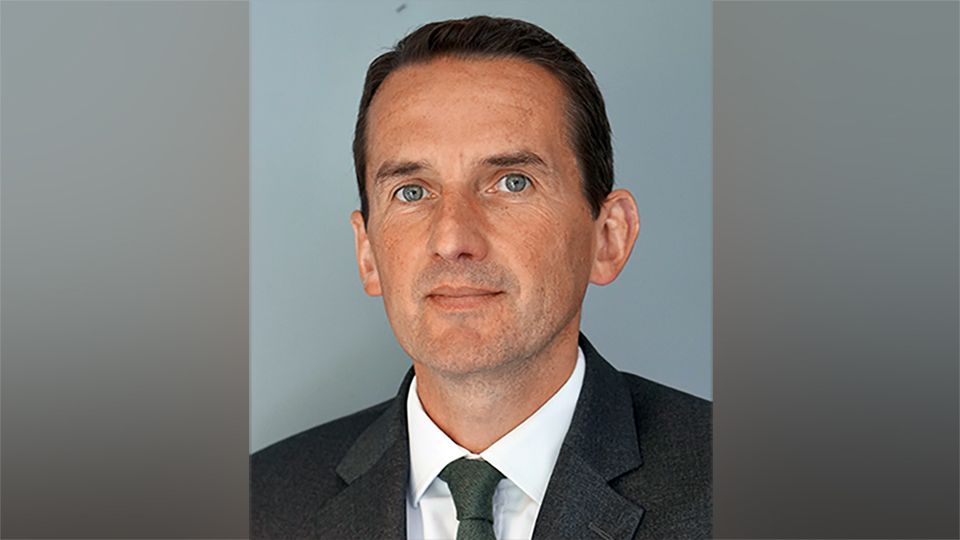Europe has led the way in terms of regulation that employs capital to consider the way institutions are impacting the climate, but investment commentators have called the legislation we have seen so far, the “tip of the iceberg” compared with what is to come.
This year has another busy regulatory calendar with investment managers needing to get to grips with new requirements under the Taskforce for Climate-related Financial Disclosures (TCFD), Mifid II and Ucits, while also absorb the implementation of EU taxonomy and prepare for phase two of the Sustainable Financial Disclosure Regulation (SFDR), delayed until January 2023.
Not only this, as the rest of the world eyes the demand for ESG products in Europe and the effects of the various new legislation, other regulators are set to follow suit.
“The EU has led the world in its response to demonstrate that market incentives can shift the allocation of capital to combat climate change and environmental degradation and its impact will be felt far beyond Europe,” Adrie Heinsbroek, chief sustainability officer at NN Investment Partners, told ESG Clarity.
“Thanks to the so-called Brussels effect, regions and countries around the world are likely to adopt rules and regulations similar to those in the single market as global best practice.”
Here, we look at the key regulations ESG investment professionals will be digesting and implementing in 2022.
SFDR and EU taxonomy
Phase one of SFDR was implemented on 10 March 2021, which the industry embraced in droves by categorising their funds within the following guidelines:
- Article 9 funds: those funds that specifically have sustainable goals as their objective (for example investing in companies whose goal it is to reduce carbon emissions).
- Article 8 funds: those funds that promote E or S characteristics but do not have them as the overarching objective.
- Article 6 funds: funds that are not promoted as having ESG factors or objectives.
Phase two of SFDR, which includes more detailed pre-contractual and annual reporting disclosures and firms being required to disclose using mandatory templates, was due to come into effect at the start of 2022 but the EU delayed this until 1 July 2022.
Therefore, this is a key focus for asset managers operating within Europe this year, and is likely to prompt even more product launches and rebrands so that funds are in line with the categories.
Olivier Carré, financial services market leader at PwC Luxembourg, said: “These regulations (SFDR and EU Taxonomy) will stimulate an industry-wide launch of so-called Article 8 (ESG) and Article 9 (sustainable) products; supporting managers and investors alike in the identification of new themes and opportunities in terms of investment strategies. In other words, once these regulations take hold, they will eventually catalyse a veritable surge in ESG adoption and integration across Europe’s AWM landscape.
“Once the regulatory dust settles and players adapt accordingly, 2022 will truly set the scene for ESG investing to become the rule rather than the exception in the European AWM landscape.”
However, Rob Harley and Lorna Logan, co-portfolio managers of the European Sustainability Fund at Stewart Investors Sustainable Funds Group, said investors will still need to review funds’ compliance with the categories carefully.
“The intentions behind this regulation are laudable: to reduce greenwashing, improve transparency, and drive investment towards sustainable companies. However, many investors are turning to third-party ESG data providers for their analysis and reporting on companies. More questions ought to be asked about the validity of ESG metrics and the scoring methods ESG data providers use.
“There are no good alternatives or short-cuts to assessing companies from the bottom up, and in a highly qualitative manner, in order to find high-quality companies that will contribute to, and benefit from, sustainable development,” they said.
SDR, fund labelling and UK taxonomy
The standardisation within the responsible and sustainable investment space has been mostly led by industry practice and collaboration, with many regulators playing catch-up. But the UK is now following in the footsteps of the EU and creating its own fund categories via the Sustainable Disclosure Requirements (SDR).

Louisiana Salge (pictured left), senior sustainability specialist at EQ Investors, the UK is now adapting “on the back of various EU directives increasing the disclosure and reporting standards for responsible investment products and providers, as well as introducing more explicit expectations of advisers”.
“As part of the UK’s green finance strategy published late last year, we expect an increased role of the UK regulators in the responsible investment industry, including the Bank of England, FCA, FRC and The Pensions Regulator,” she said.
The SDR framework will draw from international standards for disclosures on sustainability across the economy and will encompass disclosures by corporates, asset managers and asset owners, and investment products.
Kate Elliot, head of Rathbone Greenbank’s ethical, sustainable and impact research, said alongside the SDR, certain investment products will be required to display a label reflecting their sustainability characteristics. The FCA will develop and implement the labels, building on existing work under other domestic and international initiatives. Policy proposals will be issued for consultation in the second quarter of 2022.
She added: “Of course, this is just a fraction of the plethora of regulation around ESG that is currently under consideration or action. The standardisation of data is key; both the data that investors are presented with, and the data and information that they and other providers offer the wider public. A common taxonomy is central to ensuring investors understand, and can compare, the sustainability objectives of different products and services. However, it’s vital that the bar is not set too low, allowing in unsustainable activities and undermining trust in the standard.”
Mikkel Bates, regulatory manager at FE and ESG Clarity Committee member, added with so much of this still in consultation, the activity is likely to “ramp up in the second half of the year”, but Dewi John, head of research at Refinitiv, remains optimistic on “whether it is enough remains to be seen”.
“That UK regulation will take a qualitative step forward in 2021 is a definite positive. The FCA has indicated it will toughen up on greenwashing on ESG fund marketing, and I expect the screws will be further tightened over the year. But there are some rather odd formulations that will need addressing. For example, those product categories of ‘sustainable’ and ‘transitioning’ set a very low – and in the latter case confusing – bar that I suspect won’t make the final cut.”
See also: – SDR consultation: Using ‘transitioning’ in fund labelling is misleading
TCFD and TNFD
The Financial Stability Board (FSB) created the Task Force on Climate-related Financial Disclosures (TCFD) to improve and increase reporting of climate-related financial information, and in November 2020, UK chancellor Rishi Sunak announced the UK will be the first country in the world to make TCFD-aligned disclosures mandatory, but many groups have already begun voluntarily adopting the framework in response to demand from investors for transparency and clarity.
This year, it will become law – from 1 January 2022, listed issuers must disclose climate-related risks and opportunities within their annual reports with effect– or explain why it is missing, and from 6 April 2022, TCFD reporting will be mandated by law for more than 1,300 of the largest UK-registered companies and financial institutions pending parliamentary approval. These include many of the UK’s largest traded companies, banks and insurers, as well as private companies with more than 500 employees and £500m in turnover.
Stephanie Maier, global head of sustainable and impact investment at GAM Investments, commented: “As UK chancellor Sunak announced at COP26, transition plans will be a vital component for building a zero-carbon economy, and investors this year will be deliberating on what credible plans look like. We can expect to see progress on how investee companies disclose and act on their climate risks, with more reporting against the TCFD framework in particular. On top of this, the introduction of the EU taxonomy will start to influence not just reporting but asset allocation, as investors can see if their activities adhere to more stringent definitions of what counts as sustainable.
“Increasingly considered to be as important as climate change, biodiversity destruction will also continue to rise up the ESG agenda. Companies can no longer shy away from the effects of their economic activities on biodiversity, as outlined in the Dasgupta Review. Developments on disclosure including the Taskforce on Nature-related Financial Disclosures (TNFD), as well as policies around the cessation and reversal of deforestation, will increase the focus on valuing nature and protecting biodiversity. The second part of COP15 in China this Spring will also address the issue of biodiversity targets and the post-2020 Global Biodiversity framework.
Mifid II
From 2 August, European advisers will be required to introduce sustainability factors into suitability assessments under Mifid II. Although the burden is on the advisers, Bates pointed out it “brings asset managers in by the back door” as they will be required to disclose the information that advisers need.

“Asset managers will need to provide the information on the ESG characteristics of a fund. Advisers are caught in the middle with asset managers on one side and their clients on the other; they have to understand what the products do and what the clients want,” Bates (pictured left) said.
See also: – Supporting adviser businesses in the ESG transition
Cecilia Siegbahn, senior ESG regulatory expert at Nordea Investment Funds, also commented on the changes: “All eyes are now Mifid II, which comes into effect in August 2022. Among a host of Mifid II requirements is one major change – distributors and financial advisers must incorporate sustainability preferences in the overall client suitability assessment. While this is something many are currently choosing to do, it will soon become something everyone must do.
“The new requirements will add to the complexity and challenges faced by industry participants. For example, a fund classified as Article 8 today may not be suitable under Mifid II. Advisers will also set a bar in terms of the sustainability products selected. This is a careful consideration, particularly as the current focus on greenwashing is only going to intensify in 2022 and beyond.”
ISSB
A key outcome from last year’s COP26 was the announcement by the IFRS Foundation to establish an International Sustainability Standards Board (ISSB). This will be instrumental in setting a global baseline for company reporting on a wide range of sustainability issues.
“These measures will be pivotal for investors and companies to work together to achieve the Paris Agreement targets,” wrote Sarah Woodfield (pictured below), stewardship and corporate governance manager at the Investment Association for ESG Clarity in 2021.

“The commitment to ensure strong investor representation within the board’s governance structure, leveraging the knowledge and expertise of existing reporting bodies such as the Value Reporting Foundation and Climate Disclosures Standards Board, will help ensure that the standards are focused on the information that investors need to make better investment decisions for the responsible allocation of capital on behalf of their clients.”
Dan Raghoonundon, ESG research lead in the global ESG investments team at Janus Henderson, described the ISSB as “the most important development in 2022” as the industry focuses on ‘materiality’.
“[Materiality] is at the crux of the issue. We expect the debate on ‘materiality’ to gain momentum, particularly in the US, where regulations on ESG investing are currently being revamped.”








